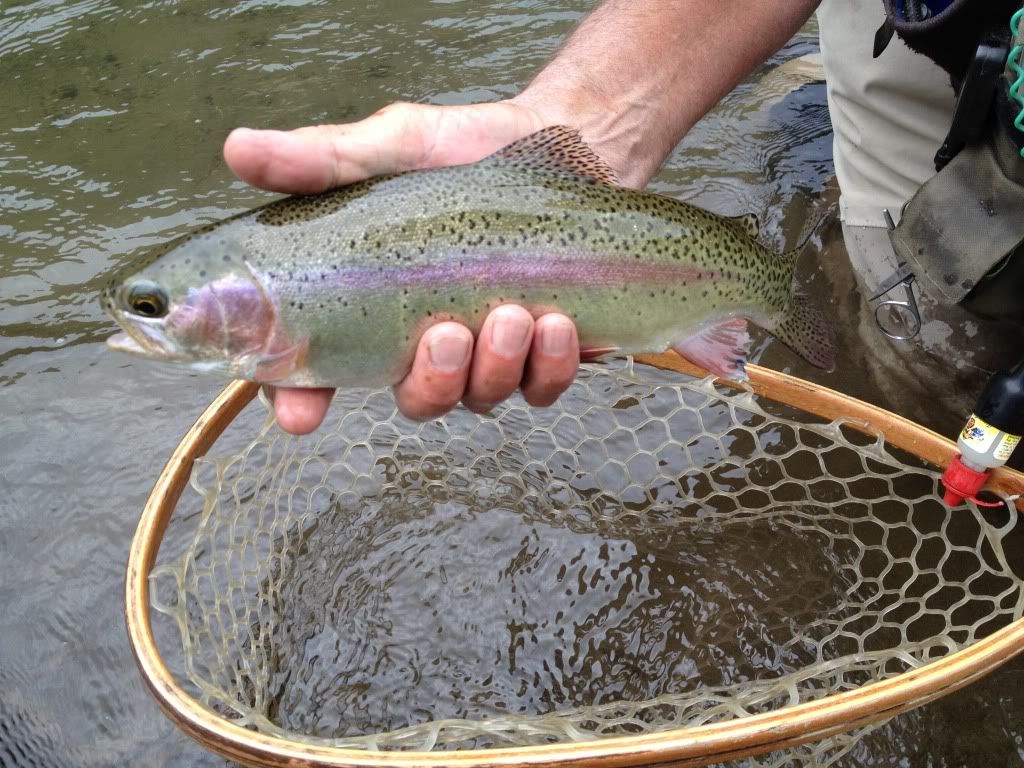-
 Nine days in Truckee
Nine days in Truckee
I just returned from spending nine days in Truckee. I fished the Truckee River every day except one when I gave myself an ego boost on the North Fork of the Yuba. The highlight of my trip was a morning guide trip with Jim Landis, AKA Big Fly. I’ve fly fished for years and have fished the Truckee about ten days a year for the past few years, nonetheless, hiring Jim was a big help to me.
The biggest thing he taught me was that there’s a big difference between a “drag free drift” and a “good drift” when it comes to indicator fishing. When dry fly fishing, the goal is usually a true drag free drift where your fly moves at the same speed as the surface water. However, when indicator fishing, your flies are near the bottom where the current is normally slower than on the surface. Therefore during a “good drift” your indicator should be moving somewhat slower than the surface water. That’s why successful indicator fisherman frequently change the amount of weight they use and the position of the indicator searching for the combination that provides a “good drift”. Jim was able to explain and demonstrate this concept clearly enough that I finally gained a reasonable understanding. Jim has a ton of patience and a gentle manner that really helps during this process.
This summer I resolved to add short line nymphing to my arsenal of techniques. I credit Bill Carnazzo’s articles in California Fly Fisher and my discussions with him at Kiene’s with motivating me to give the technique a good try. With Bill’s help, I’ve managed to catch fish every day using the technique. In pocket water, it’s much more effective than indicator fishing. While on the Truckee, I now find myself switching between short line nymphing and indicator fishing depending on the situation.
I landed between 3 and 12 fish each day (plenty of LDR's too), mostly smallish, with 1-3 each day in the 14” to 16” range. I fished from Squaw Valley all the way to Floriston and managed to explore lots of new water I’d never fished. I had three “conversations” with big fish. One Jim estimated at 22 inches after the brown jumped. I did a poor job of line control when I stumbled and left some slack in the system and Mr. Brown was gone. The next one took off downstream, then across the river and broke me off around a big boulder. The last one peeled off line then sulked on the bottom before the hook simply pulled out. I’ll be back!
As I’ve read many times on this message board, the Truckee is a challenging river. I’m glad I learned to fly fish on more forgiving waters, but it is a great “home water” – plenty of challenges and lessons. Next time I promise - more photos and less verbiage.

craig
 Posting Permissions
Posting Permissions
- You may not post new threads
- You may not post replies
- You may not post attachments
- You may not edit your posts
-
Forum Rules






 Reply With Quote
Reply With Quote

Bookmarks